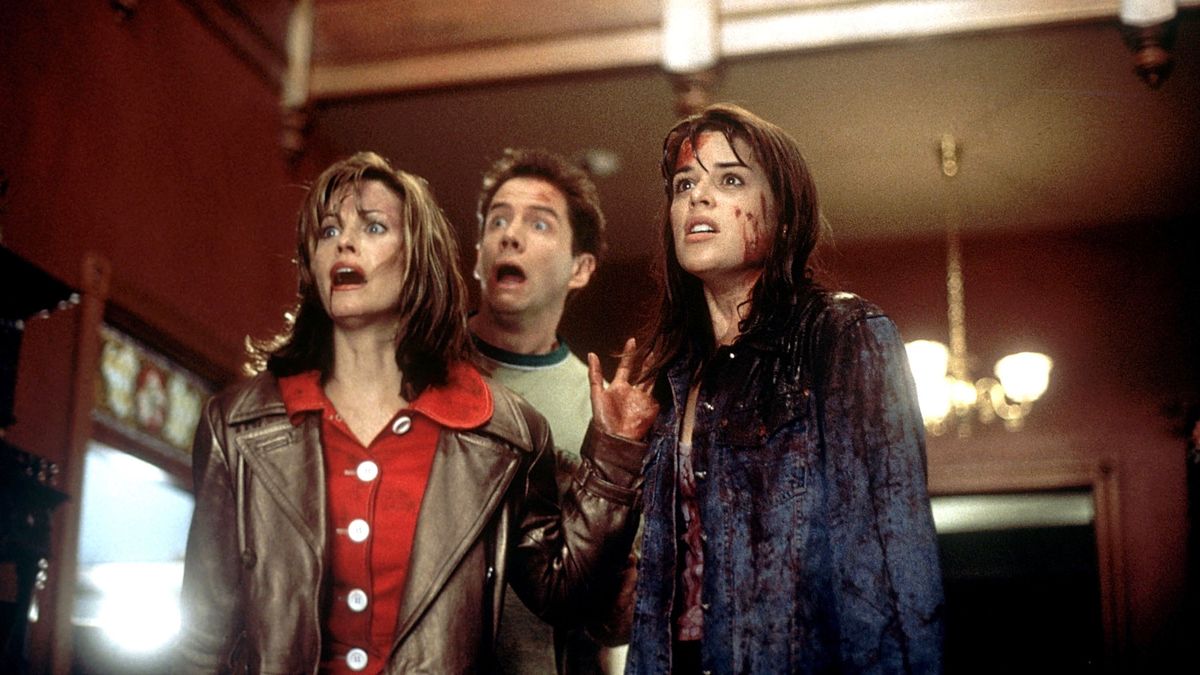Table of Contents Show
When Scream (1996, Wes Craven) first slashed its way into theaters twenty-five years ago, it not only proved to be a massive hit, but it did the impossible; it revitalized the horror genre as a whole. This slick teen slasher film hasn’t left the pop culture lexicon since it hit movie screens in 1996. After the smash success of the first movie, a franchise was born with two films and a reboot in 2011 following Sidney Prescott’s life. The fifth installment, also titled Scream (2022, Matt Bettinelli-Open & Tyler Gillet), remains slated for release in January 2022, which will follow an older, hardened version of the final girl like Halloween (2018, David Gordon Green).
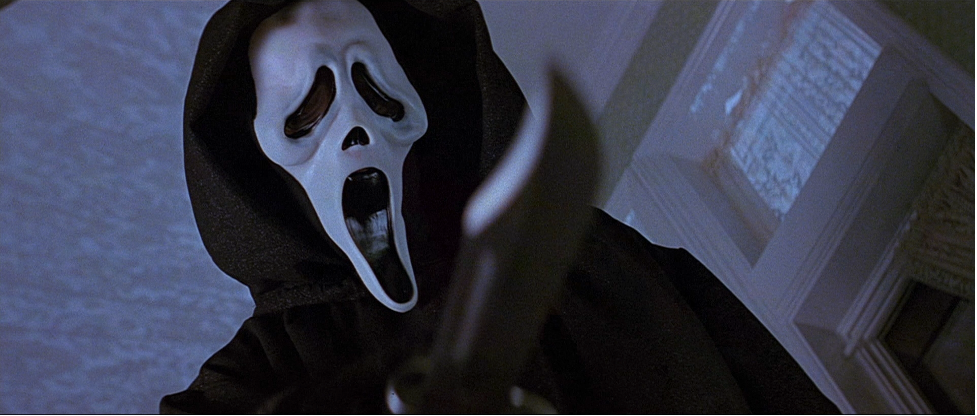
These sequels weren’t just a cash grab; Scream’s impact on pop culture can be felt every time the leaves start to change, and crisp fall winds begin to blow. Ghostface’s mask remains synonymous with the month of October, lining the shelves of Spirit Halloweens everywhere. The opening scene of a sobbing Drew Barrymore on the phone with the killer still gets lauded as one of the most iconic introductions to a horror flick. Even if you’ve never seen the film, the image of a young Skeet Ulrich licking fake blood off his fingers has most likely popped up on your social media feed during spooky season.
The franchise’s popularity exists for a good reason. After just one viewing of the original film, it quickly becomes clear why these movies have a dedicated fanbase and why the first one holds onto its crown as the ultimate teen slasher. Scream remains a staple of horror movies and pop culture nearly three decades after its release thanks to its strong characters, clever, tight writing, and compelling filmmaking.
The Fierce Final Girl Grounds The Film
Sidney Prescott fights tooth and nail from the first time she’s attacked in her own home all the way until the last dwindling minutes of the movie. She’s no damsel in distress; if anything, it’s the killers who should be afraid of her. Her resourcefulness proves to be one of her best assets. She uses her environment — from doors to television sets to umbrellas — to fight back against Ghostface when he is and isn’t masked. Sidney always finds an exit route even in the tensest of situations, a skill that comes in handy in every act of the film. It is also easy to sympathize with her. The brutal murder of her mother a year prior to the events in the movie leaves her deeply scarred to the point where she can no longer be intimate with her boyfriend. But Sidney tries not to let her trauma define her. Instead, she calls her boyfriend out for being selfish when he tells her she needs to get over the loss of her mother.
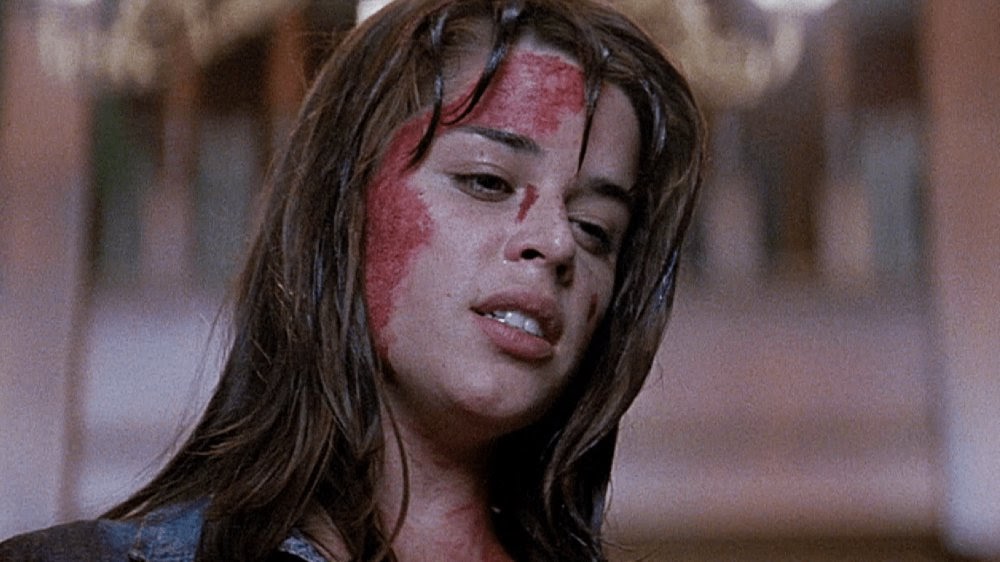
It’s worth noting how she’s not punished for indulging in typical horror movie staples that usually equal a death wish, especially for women in the genre. She goes to a party, has sex, and runs up the stairs to avoid the killer. Still, the narrative never punishes her for these things. Instead, it celebrates them; she’s a new kind of final girl for a new generation of horror fanatics. Sidney breaks the mold of what a leading lady in a slasher should act like, and Scream is better for it. Neve Campbell still gets heralded as one of horror’s best scream queens, and it’s clear why. Sidney Prescott’s resilience, grit, and refusal to give up, even with a knife against her neck, helped her win over the hearts of audiences twenty-five years ago. It’s no wonder she remains one of the genre’s most beloved final girls over two decades later.
It’s Self-Aware Nature Never Overstays Its Welcome
One of the defining features of Scream comes in its references and nods to the dozens of horror films that came before it. Whether it’s the film’s director making a cameo in an outfit eerily similar to Freddy Krueger’s getup or Randy informing other teens at the party that if you have sex, drink, or say ‘I’ll be right back!’ in a horror movie, you’ve signed your death wish, Scream pokes fun at decades of horror films without coming across as mean-spirited or condescending. Kevin Williamson’s screenplay never feels self-indulgent. Its tongue-in-cheek nature laughs with horror fans, not at them.
While the script may tease viewers about horror movie tropes, it’s not out of mockery. On the contrary, these nods to 70s and 80s slashers remind audiences why they fell in love with them in the first place. Tropes, cliches, and staples of any genre can grow tiresome, but they also provide comfort to audiences. Romance fans adore a happily-ever-after. Action movie fanatics live for a good final battle or chase scene that can give them one last adrenaline rush. Horror fans may have differing opinions on what constitutes ‘scary,’ whether it is jump scares or gore or a psychological thrill. Still, the genre has something for everyone to enjoy and dissect. It’s why fans file into movie theaters knowing they’re going to be scared for two hours, give or take.
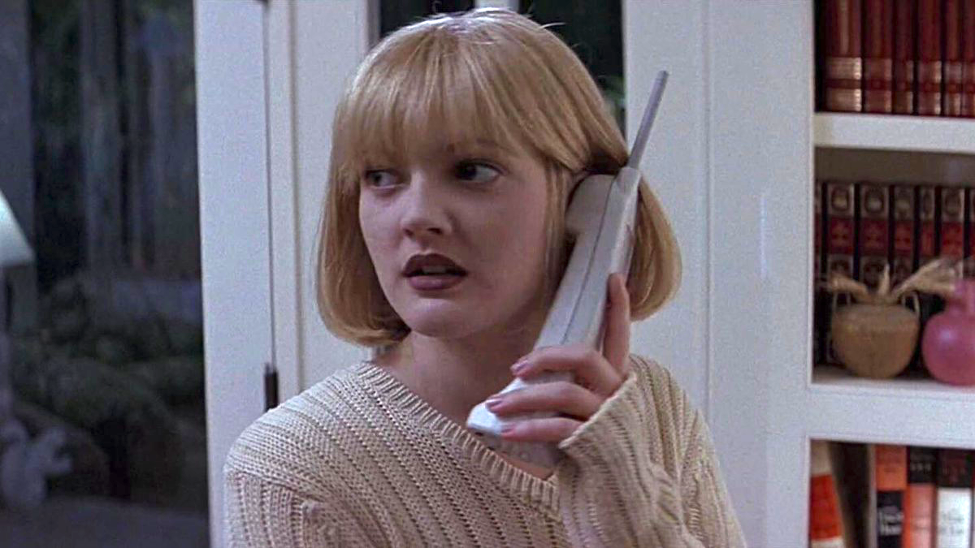
Scream provides the audience with a good balance of nostalgia for the flicks that shaped entire generations of fans and material that feels fresh, despite hitting many familiar story beats. Sidney runs up the stairs to get away from Ghostface just minutes after informing him how insulting that trope is to women. Her best friend gets killed. Even after the story’s climax, when film geek Randy informs the audience that “this is the part where the supposedly dead killer comes back for one last scare,” the movie has this happen but ends with Sidney not even hesitating to save the day permanently.
Scream serves as a love letter to the horror films that came before it, and it helped pave the way for the ones that would come after it. The plentiful references to other horror flicks don’t get old in Scream because of how cleverly they’re incorporated into the plot and how they’re clearly done as a tribute to them. But, like teasing a younger sibling, it’s all for fun and out of love.
A Twist That’s, Well, Pretty Twisted
Scream lets the audience play a guessing game from the opening scene when Drew Barrymore’s Casey pulls off Ghostface’s mask in her dying moments. She may see who’s behind her death, but the camera cuts away before the audience does. Like any good whodunit, anyone in Woodsboro could be responsible. Like Randy says in the movie store, “Everyone’s a suspect!”
If you pinned the blame on Sidney’s boyfriend Billy when he first came on screen fifteen minutes into the film, you were only half-right. Not only did the film shock audiences by having a supposedly dead Billy be responsible (after he was ‘attacked’ and ‘killed’ in front of Sidney and the audience, no less,) it pulled a one-two punch by revealing Stu, Billy’s friend, and Sidney’s best friend’s boyfriend, was working with Billy. Two killers are responsible for the bloodbath in Woodsboro. Not only did they kill Tatum, Principal Henry, and Casey, but they were also responsible for Sidney’s mother’s death a year before the movie’s events.
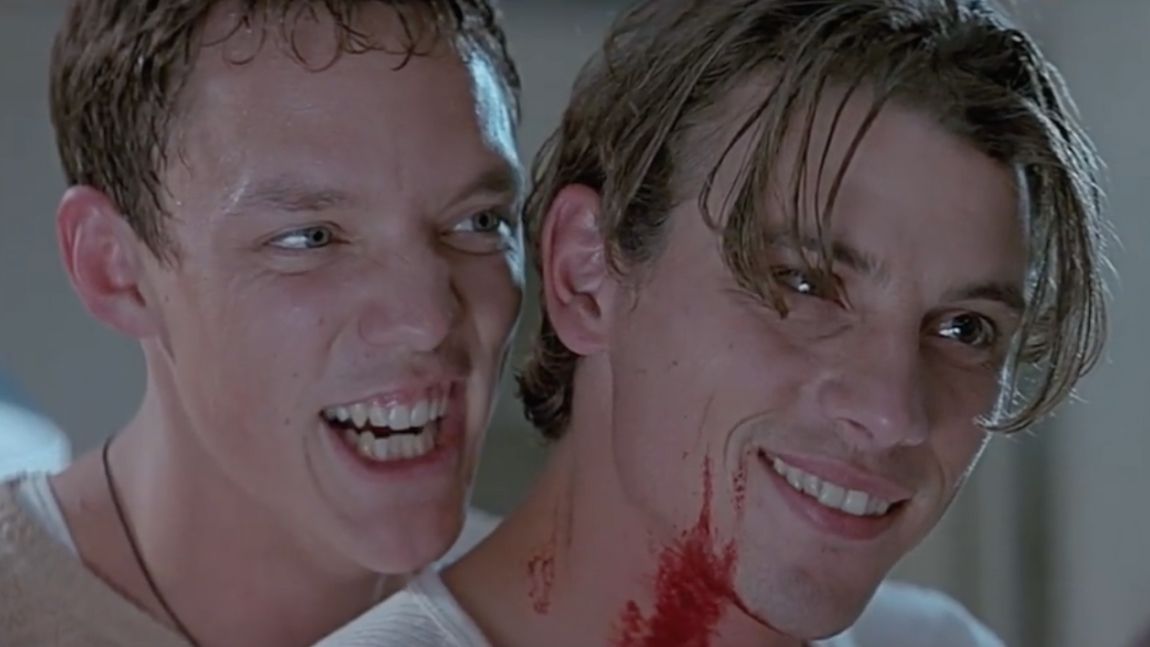
Scream took three twists-Billy, Stu, and their culpability in Mrs. Prescott’s death-and seamlessly wove them into the climax of the film. They come one right after the other, and instead of feeling overwhelming or confusing, they make the transition into the final fight even more exciting. Close-up shots of Billy and Stu not only highlight the warped joy they get in torturing Sidney and recounting their kills but also the terrifying predicament Sidney’s trapped in. Stu’s house may be big, but she can’t run and hide forever. The white lights and soft color palette of the kitchen in the scene make the bright red of the boys’ blood-both real and fake-burn even brighter in the viewer’s eyes.
The reveal of the men behind the mask raises the stakes of the film to their highest peak. Ghostface attacking Sidney in her own home made it personal, but with the revelation that her own boyfriend killed her mother, the film reaches its darkest point of no return.
A Killer Supporting Cast
A slasher film can only be as strong as its ensemble, and Scream more than delivers on that front. Just two years after she first sat in Central Perk coffee shop in the wildly popular sitcom Friends (1994, Kevin Bright), Courtney Cox was the persistent, if pesky, tabloid reporter Gale Weathers. Her acidic tongue, incessant nosiness into Sidney’s life and trauma, and brightly colored pantsuits made her a memorable character, for better or worse. Yet, despite her cattiness and seeming lack of empathy, Gale’s romance with Deputy Dewey, her bravery in stopping Billy from killing Sidney, and her dedication to her job makes her an interesting character to follow. Even if her presence still induces eye-rolls or lengthy groans when she appears on screen, Gale weasels her way into viewers’ hearts.
Skeet Ulrich’s portrayal of boyfriend-turned-killer Billy Loomis perfectly encapsulates a boy who’s greasier than his 90’s haircut. He embodies the charming, albeit slightly suspicious, nature of the bad boy many teens dream of having climbed through their bedroom window. Maybe just not having the moment ruined by the boy informing them that watching The Exorcist (1973, William Friedkin) made him think of them. He not only sells his supposed innocence to Sidney after he’s first caught at the end of act one but to the audience as well. Seeing him slowly turn around and repeat the iconic line from Psycho (1960, Alfred Hitchcock) before shooting Randy during the climax drenches the audience in water colder than the corn syrup he covered himself in to sell his fake death to Sidney. Ulrich pulls off the transition from high school boyfriend to cold-blooded killer seamlessly. Whether he’s screaming for Sidney to reveal herself, stabbing his partner in crime, or tearing the living room to shreds, once his switch gets flipped, he embraces his warped role even more.
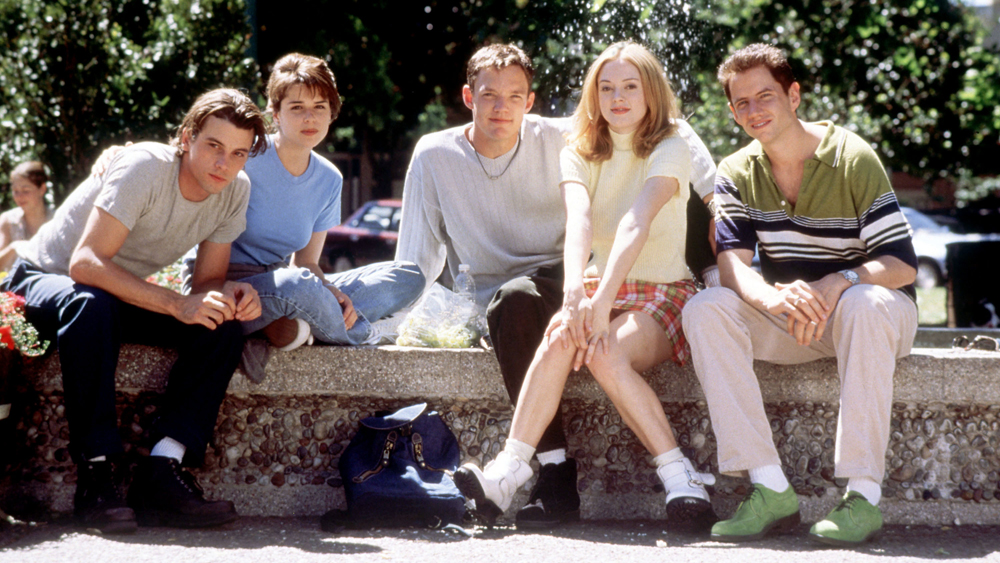
Before he was unmasking bad guys with the help of the Mystery Gang in the live-action Scooby Doo (2002, Raja Gosnell) films, Matthew Lillard was Stu, one of the bad guys behind the very mask Scooby and co would normally foil. Lillard fully leans into the obnoxiousness and immaturity that only high school boys can possess. Every time he’s on-screen, you’re reminded of the kid in your senior year English class who never stopped talking and never came into his own, instead becoming a lackey for other equally irritating classmates. When Billy and Stu reveal their plan to Sidney, Lillard commits entirely to his character’s unhinged nature. Spit dribbles down his chin, his frown deepens the more he bleeds out and whines, and his eyes only grow bigger and bigger with every passing moment.
Playing Sidney’s BFF Tatum, Rose McGowan delivers one of the film’s most iconic lines to the killer, “Can I be the helpless victim? Oh, please don’t kill me, Mr. Ghostface, I wanna be in the sequel!” with both sauce and softness. Her loyalty to Sidney endears her to the audience. She gets Gale Weathers to back off the final girl and never fails to have a snappy comeback ready for her boyfriend, the reporter, or any other character in the film. Her brother, Deputy Dewey Riley, portrayed by an endearing David Arquette, also makes his presence felt in the movie. Scream once again manages to stand out amidst the sea of teen slashers by having such a memorable cast of characters.
The More Minor Characters Stand Strong
Even characters with limited screen time make the most of their time in front of the camera. Drew Barrymore’s character Casey, the second of Ghostface’s victims, dies a mere ten minutes into the film, a shock for 90s audiences. You don’t kill one of your biggest stars before Act One ends, especially when she was featured so heavily in the film’s marketing campaign. Even with her minuscule time in front of the camera, Barrymore nails the terror any teenager would experience if a killer called them on the phone and murdered their boyfriend in front of their eyes.
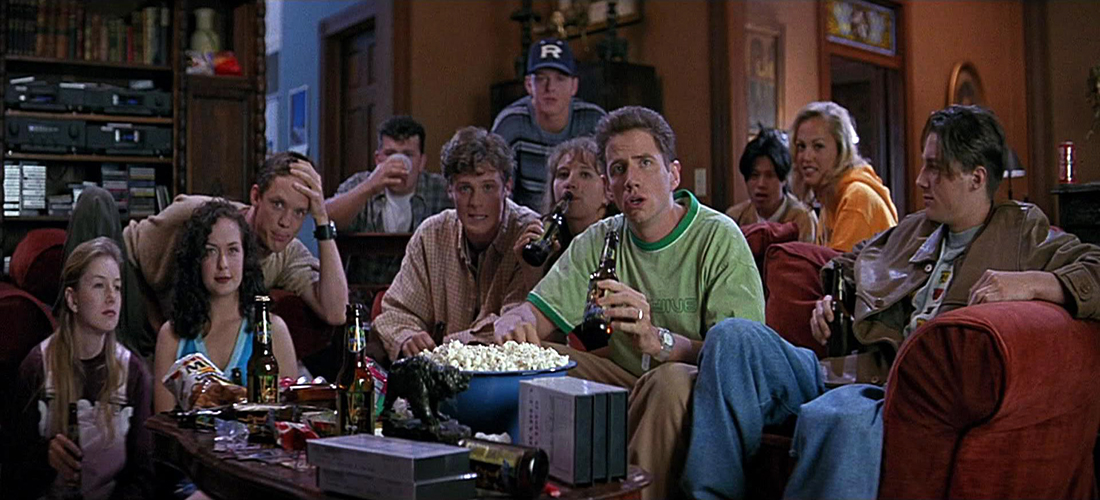
Even more minor characters, such as Henry Winkler as the hardened principal, Jamie Kennedy as film geek Randy, and W. Earl Brown as camera guy Kenny, each gets their time in the spotlight. As a result, no one feels inconsequential or underutilized. Even if these characters aren’t actively moving the story forward, they’re helping build relationship dynamics with the main cast, like Kenny and Gale’s tumultuous work partnership and Randy’s unrequited crush on Sidney.
While that cast received a solid script to work with, everyone’s delivery only helps amplify the humor, terror, and mixture of both of every scene. Plenty of characters die in horror movies, and it’s often hard to recall even a single personality trait for each of the victims. Like with every other trope, Scream manages to subvert this one as well.
90’s Filmmaking That Holds Up
The camerawork of Scream, aided by Craven’s keen directorial eye and the film it was shot on, serves the story and tone fittingly. Confrontations side characters have with Ghostface are shot via Dutch angles, reflecting the disoriented and panicked state of mind these characters find themselves in as they try and fail to avoid a gruesome end. Seeing these titled shots sprinkled methodically throughout the film makes sure they’re impactful when they appear and avoids over-saturation and repetition.
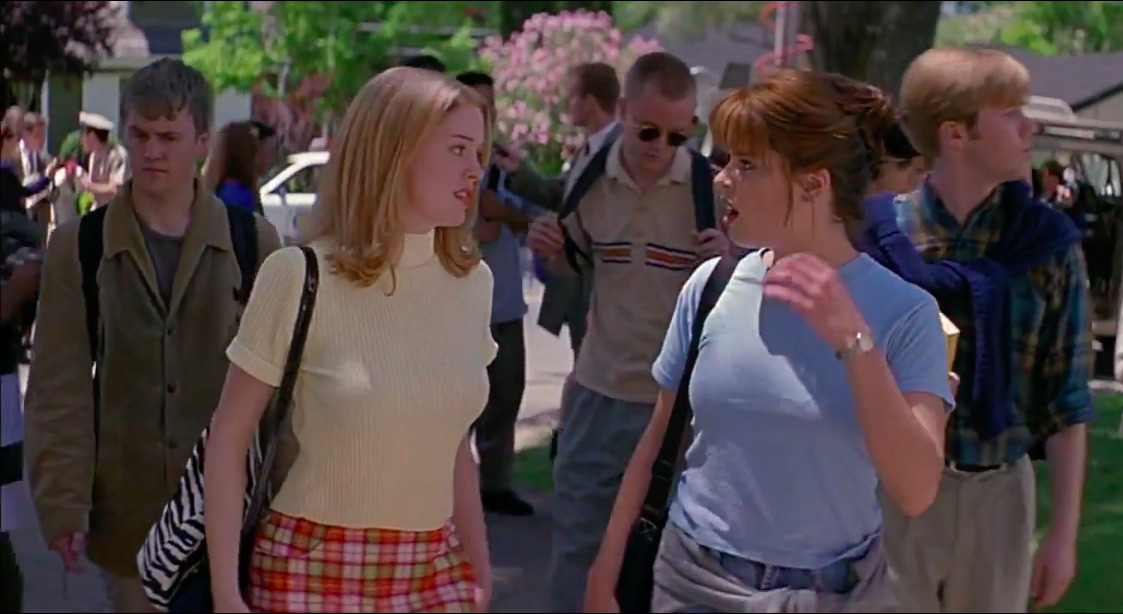
Craven uses wide shots to establish locations effectively and skillfully, from Sidney’s back patio that faces the green California mountains to Stu’s massive home that only emphasizes how isolated it is from town-and any kind of help once things go awry. Close-ups on characters, whether on Sidney as Gale challenges her on what happened the night Mrs. Presott died or on Billy as he reveals his reasoning for donning the Ghostface mask, help emphasize the absolute panic and terror our main character feels. Tracking shots follow Sidney as she runs away from the killer, and they help the audience feel more engaged during chase scenes.
Patrick Lussier’s editing also proves to be as snappy as the script. Fight scenes between Sidney and Ghostface flow well due to limited cuts. The audience can see all of the action, and the use of wide, medium, and tight shots on the characters and knife help build tension and create dynamic scenes. No scene, action-packed or not, feels like filler or wasted time. Every moment in the movie serves a purpose, from foreshadowing the killers to building character dynamics. Scream may be a quarter of a century old, but its skilled and careful filmmaking helped it enter its twenty-fifth year with grace.
Scream & The Film’s Legacy Lingers
Wes Craven’s magnum opus continues to age like rich, full-bodied wine with every year that passes. Its enduring references, lovable and memorable characters, and brilliant screenplay all came together to create a horror film that’s withstood the test of time and a slew of other flicks that followed on its heels. Scream changed the horror game, and while a variety of copycat slasher films came after, they weren’t able to capture lightning in a bottle the same way the original did.
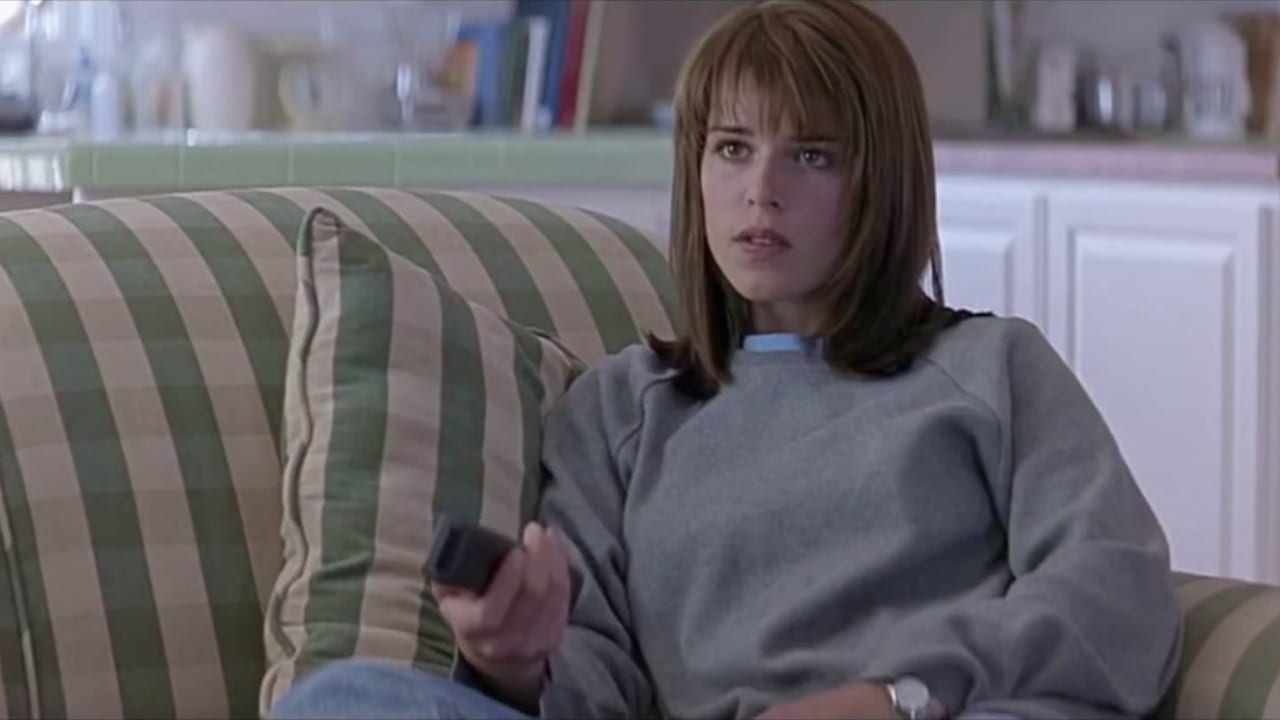
Amidst the plethora of teen screams that came before and after it, this film hasn’t lost its pop culture relevancy or gotten lost in the crowd. With the fifth installment of the franchise, ironically named Scream, slated for release in January, it’s clear the excitement and joy horror fans have for the franchise hasn’t faded with time. Gale Weather’s neon blazer and pencil skirt combo may have gone out of style, but Sidney Prescott battling Ghostface never will.
